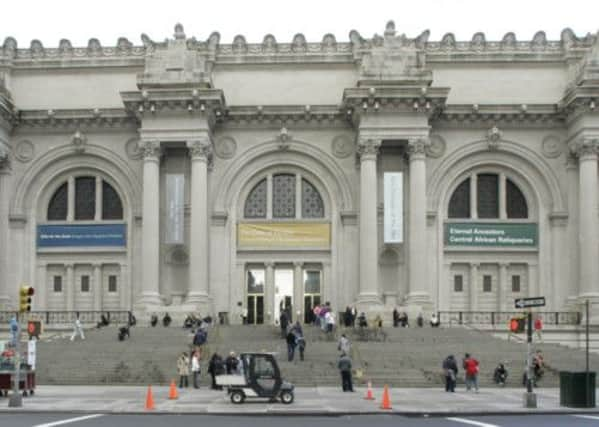Burrell artefacts could be loaned to New York Met


Discussions have been held between guardians of the Burrell Collection and the prestigious New York museum as part of a “grand tour” of artworks from the Glasgow institution.
It comes as Glasgow City Council is attempting to steer a change in legislation through the Scottish Parliament to allow some of the Burrell’s 9,000 items to be loaned at home and further afield.
Advertisement
Hide AdAdvertisement
Hide AdThe controversial initiative goes against the wishes of the shipping magnate who left the city the eclectic collection, but by sponsoring a private bill through Holyrood, the nation’s largest local authority hopes the terms of the deed of his gift can be amended.
Joan McAlpine, the convenor of a parliamentary committee asked with determining what is best for the collection told The Scotsman that Glasgow Life, the arms-length organisation which manages the Burrell, are holding tentative discussions over what she described as a “grand tour.”
She said: “Sir Angus Grossart [chair of the Burrell Renaissance group and a board member of Glasgow Life] was giving some hints of the kind of people he’s being speaking to in terms of a world tour. Although they don’t have anything firmed up at the moment, I know they’re talking to the Met in New York, and from the point of view of the people at Glasgow Life, that’s an opportunity to enhance to reputation of the collection, the city and Scotland.”
Ms McAlpine, SNP MSP for the south of Scotland, emphasised that she and her colleagues on the committee had an “open mind” over the proposed legislative changes.
The proposal to lend from the collection comes as its building requires extensive renovation, a process which will lead to its closure between 2016 and 2020 and cost an estimated £40m.
The committee set up to scrutinise the Burrell Collection (Lending and Borrowing) (Scotland) Bill met yesterday in the city’s Pollok House, where they heard its first day of evidence.
Ms McAlpine said the committee heard from an array of figures during the session, among them experts in the way artefacts are transported.
“We heard from people like Ben Thomson from the National Galleries of Scotland who explained how there have been enormous advances in the transportation of works of art, and that it is very seldom that they are damaged,” she explained.
Advertisement
Hide AdAdvertisement
Hide Ad“However, the curator of the Wallace Collection in London, which doesn’t lend, made the point that every time you move an artwork, it’s damaged. It might be in an infinitesimal way, but moving it will cause damage over time.”
She added: “There are moral arguments and there are pragmatic arguments. Sir William Burrell was very proud of his collection and wanted it to be widely seen. On the other hand, the integrity of the collection was important to him as well. It’s about balancing those things, moving with time, and being flexible.”
The committee also heard evidence from Museums Galleries Scotland, which believes international lending would “greatly increase” access and “demonstrate the importance” of the works.
The Office of the Scottish Charity Regulator, meanwhile, noted the “collaborative” efforts of the council, stating that there was “no other competent legal remedy which permits the restrictions on lending and borrowing” set out by Sir William.
But in its evidence, the Donor Watch group warned visitors to the Burrell would be “deprived” of seeing artefacts if the plans go ahead.
It said the so-called “thin end of the wedge” argument had proved to be an “accurate prediction of future behaviour” when it comes to the way bequests are treated, sometimes leading to the “partial destruction” of works and their “fragmentary and nonsensical display.”
Further evidence will be heard by the committee later this month, with a preliminary report due by the end of October. Members of the Scottish Parliament are scheduled to make a final decision on the bill in January.
Councillor Archie Graham, the Depute Leader of Glasgow City Council and Chair of Glasgow Life, said: “Sir William, in bequeathing his collection, was determined that it should benefit the people of Glasgow and the wider world. Some 60 years later, we believe we have an opportunity to realise the full benefits of Sir William’s gift.
Advertisement
Hide AdAdvertisement
Hide Ad“By touring this collection, we will be able to improve our understanding of these object through improved conservation and research - and at the same time, be part of an international community of the very finest, and high profile, cultural institutions. That would benefit the people of Glasgow through reciprocal loan arrangements, bringing some of the world’s finest treasures to our city.
“I’m delighted to have been able to make our case to the committee and, I hope, that when all the evidence is presented, they will agree with us, that the time is right to unlock the potential of this outstanding collection.”